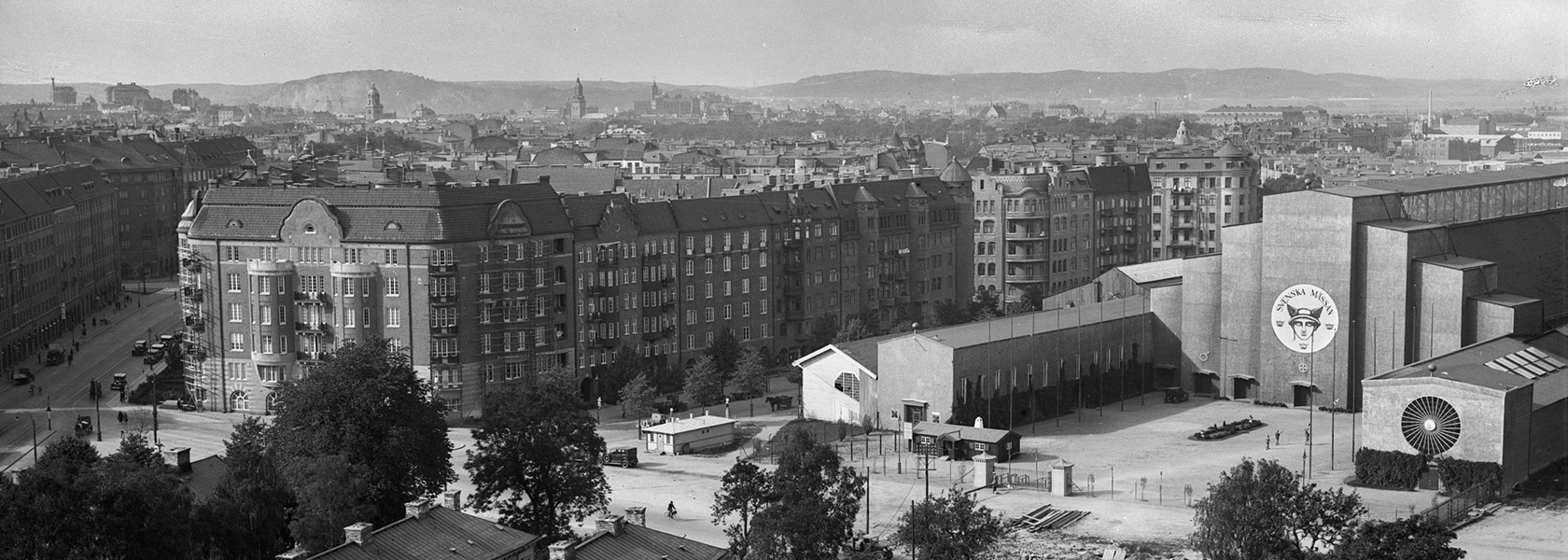The Swedish Exhibition & Congress Centre – a pioneer in Swedish events
The Göteborgs Allehanda organisation put forward a proposal for a trade fair as long ago as 1804: “a meeting place for professionals in Swedish industry to provide both their own countrymen and foreigners with more information about Swedish industry and thus better conditions for its dissemination: what could we not hope from the respectable, honest and patriotic businessmen of Gothenburg?”.
It was not until August 1917, when Doctor Sigurd Hansson wrote a leading article in Göteborgs Handels- och Sjöfartstidning, that plans for a Swedish trade fair in Gothenburg began to be discussed seriously. In November of that year, the Chamber of Commerce established a committee to investigate the possibility and a few months later, on 8 July 1918, His Majesty King Gustav V and Queen Viktoria inaugurated the country’s first trade fair.
1918: The first exhibition
The Swedish Exhibition Centre is inaugurated and the first trade fair takes place, attracting an impressive 42,153 visitors.
1923: The move
The Swedish Exhibition Centre moves from premises at Gothenburg School of Trade (Göteborgs Handelsinstitut) to its current location by Korsvägen.
1939: New exhibition halls
Halls A and B replace the dilapidated anniversary hall, providing a base for events such as handball, tennis, boxing, concerts and religious meetings.
1945: Attendance record
The Second World War ends on the very same week that the exhibition opens, on 12 May. 152,000 jubilant visitors come to the exhibition centre – a new record.
1950: International scope
Companies from our neighboring Nordic countries are invited to exhibit at the Swedish Exhibition Centre for the first time, and three years later exhibitors are invited from the rest of the world.
1957: Main exhibition hall
The Main Exhibition Hall is opened at Korsvägen. The Swedish Exhibition Centre also begins renting out office space to balance its unsteady income.
1971: Growth
Hall C is opened, linking the Main Exhibition Hall to the other halls. We acquire Scandinexpo and its four trade fairs, and take the step from renting out halls to organizing and promoting exhibitions.
1973: Fourteen
The General Trade Fair (Allmänna varumässan), held annually since 1918, takes place for the last time. Exhibitions for the trade and public take over, with a full 14 exhibitions on the programme. Four years later the new Hall B is added.
1984: Opening of hotel
The Hotel Gothia opens next to the Swedish Exhibition Centre. The new Hall A replaces the timber exhibition hall built in 1939.
1992: Congress building opens
This is a major investment during a deep recession, but the new building is vital for our growing congress and conference business.
1993: Self-management
The Swedish Exhibition & Congress Centre takes over the Hotel Gothia from Sara Hotels AB. This is the start of a new business model – managing the hotel and restaurants ourselves. This process eventually leads to our present one-stop offering, with everything under one roof.
1997: Expo
The Expo Hall opposite Liseberg is opened, giving a boost to event business. The Hall increases capacity at the Swedish Exhibition & Congress Centre by 33 percent and helps us attract the Annual General Meeting of the Swedish Society of Medicine in 1998. The Swedish Exhibition & Congress Centre now attracts a million visitors each year.
2001: Tower number two
The second tower is completed and the Hotel Gothia Towers now has over 500 rooms. The EU Summit is held in the city in the same year and is attended by all European leaders and the US president, George W. Bush.
2014: Tower number three
The third tower is completed along with a string of other initiatives, including restaurants, a spa, lounge areas, art and pop-up stores.
2015: Billion turnover
The business breaks SEK 1 billion in turnover.
2018: 100 år!
The Swedish Exhibition & Congress Centre celebrates its first centenary and is well prepared for the next 100 years.
2023: Big strides towards a sustainable meeting place
For the first time since 2019, the Swedish Exhibition & Congress Centre and Gothia Towers can complete a full financial year without pandemic restrictions. In line with its purpose to promote business, the Swedish Exhibition & Congress Centre Foundation generates approximately SEK 3.4 billion in tourism industry revenue. During the year, we take major strides in our work to move towards the goal of being a sustainable meeting place.
